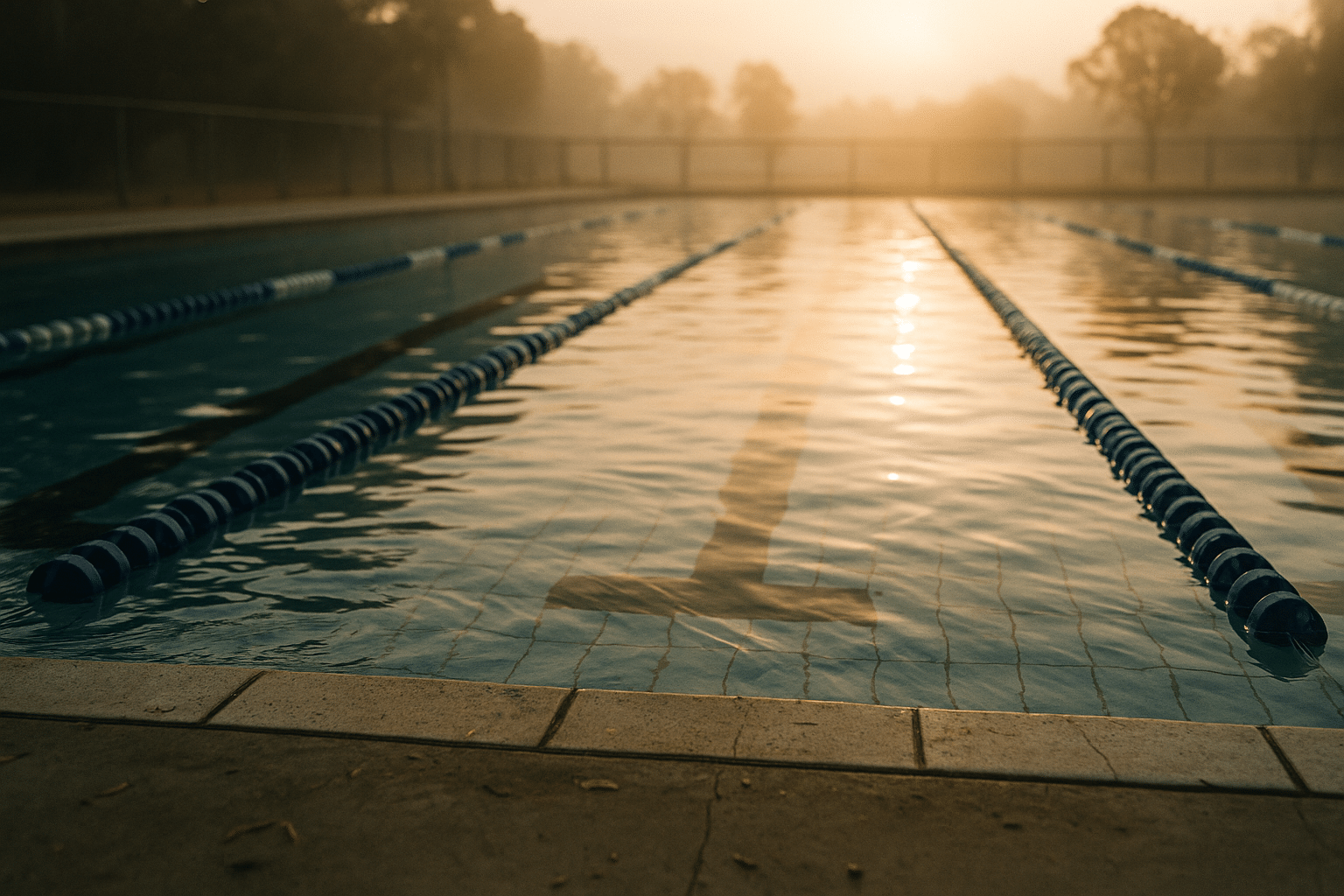
Explore the world of swimming
Outline:
– Section 1: Why Swimming Matters — a clear look at physical, mental, and social benefits, and why the water welcomes all ages.
– Section 2: Strokes and Mechanics — how freestyle, backstroke, breaststroke, and butterfly differ in technique, muscle use, and energy cost.
– Section 3: Training and Progression — building sessions, drills, and milestones for learners to seasoned lap swimmers.
– Section 4: Safety, Gear, and Environments — essential safety habits, pool vs. open water considerations, and practical equipment tips.
– Section 5: From Pool to Lifelong Habit — setting goals, finding community, and sustaining motivation with a mindful, balanced approach.
Why Swimming Matters: Health, Joy, and Access for Every Body
Step into the water and the world quiets. Gravity lightens its grip, joints sigh with relief, and motion becomes rhythm. Swimming matters because it offers a rare combination: it’s accessible, deeply restorative, and physically demanding in a measured way. Whether you glide down a calm lane before sunrise or find your cadence in a lake as birds skim the surface, the water invites participation at nearly any age and ability level.
From a health standpoint, swimming is a whole-body activity. Large muscle groups in the shoulders, back, core, and legs work in concert, while the heart and lungs adapt to steady, controlled exertion. Research has associated regular moderate-to-vigorous aerobic exercise with improvements in cardiorespiratory fitness and reductions in risk factors linked to heart disease and type 2 diabetes. Because water supports body weight—buoyancy offsets a substantial portion of load—swimming places relatively lower impact stress on joints compared with many land-based activities. This makes it a practical option for individuals with joint sensitivities, newcomers to exercise, or athletes cross-training to manage impact.
The mental benefits are equally compelling. Many swimmers describe an almost meditative focus: counting strokes, timing breaths, and feeling the tactile feedback of the water. These elements encourage mindfulness and can ease day-to-day stress. The repetitive nature of lap swimming, combined with measured breathing, can foster a steady, calming tempo similar to paced breathing techniques used for relaxation. For some, the pool becomes a reliable anchor for mental clarity; for others, it’s a social hub where lane partners evolve into supportive friends.
Beyond personal wellbeing, swimming holds practical life value. According to public health discussions around water safety, acquiring basic swimming skills reduces drowning risk and supports safer recreation—particularly relevant in communities near rivers, coastlines, or lakes. It’s also a skill that scales: from learning to float and kick to mastering strokes for fitness or engaging in open-water events. The water accepts incremental progress. A few consistent sessions per week can yield noticeable improvements in comfort, stamina, and confidence. If exercise has felt intimidating, swimming’s smooth resistance and forgiving buoyancy can be a steady, welcoming path forward.
Key takeaways for why swimming matters include:
– Whole-body aerobic training that is gentle on joints.
– A mindful rhythm that can ease stress through paced breathing.
– Scalable skill development from basic safety to advanced technique.
– Community and social connection through group sessions and clubs.
Strokes and Mechanics: How Technique Shapes Efficiency and Energy Use
Each swim stroke is a language of movement. The grammar? Hydrodynamics, body alignment, and timing. The four primary competitive strokes—freestyle, backstroke, breaststroke, and butterfly—each solve the same problem differently: how to move a body through water efficiently while managing drag and producing propulsive force.
Freestyle, often the first stroke learned for fitness, emphasizes a streamlined body position with the face in the water, bilateral or unilateral breathing, and an alternating arm cycle. The hand enters in line with the shoulder, extends forward, and “catches” the water with a high elbow, anchoring the forearm vertically to press back. Core stability supports a gentle body roll, reducing frontal drag. Efficiency cues include a relaxed recovery, consistent kick, and exhale in the water to minimize head lift for inhalation. Compared with other strokes, freestyle tends to be the most energy-efficient over distance because its propulsion is continuous and drag is relatively low when alignment is maintained.
Backstroke mirrors freestyle mechanics but flips the swimmer onto the back. Eyes up, hips high, steady flutter kick—this stroke rewards posture and rhythmic rotation. Breathing is unimpeded, which can help beginners maintain a calm cadence. Because the airway stays clear, backstroke can be a smart recovery choice during sets and is valuable for spinal mobility and shoulder balance.
Breaststroke moves to a different beat. Its pull-and-kick phases are distinct rather than continuous: an out-sweep, in-sweep, and recovery of the arms, paired with a powerful, symmetrical whip kick. Head-and-chest lift for breathing introduces vertical oscillation, which increases drag; thus, timing becomes the gatekeeper of efficiency. Many find breaststroke friendlier for orientation in open water due to the forward gaze during the breath, but it can be less energy-efficient at higher speeds. It recruits adductors and hamstrings uniquely through the kick, which can be helpful for muscular balance when combined with other strokes.
Butterfly is the poetry of power—graceful when fluent, demanding when forced. Propulsion arises from a synchronous arm recovery and a two-beat dolphin kick per cycle. A strong “catch” with both arms and an undulating body wave transfer force smoothly. Because butterfly requires short bursts of high force and exact timing, it typically carries a higher energy cost than the other strokes and is often used for technique drills, sprint sets, or as a strength-building complement. When performed with focus on body line and relaxed rhythm, it can also improve coordination across hips, core, and shoulders.
Comparing mechanics and typical uses:
– Freestyle: continuous propulsion, strong distance option; emphasizes catch, hip rotation, and streamlined alignment.
– Backstroke: similar to freestyle, airway free; supports balanced shoulder mechanics and recovery.
– Breaststroke: discrete phases, orientation benefits; effective for varied muscle engagement but higher drag if timing slips.
– Butterfly: high power, coordination-heavy; valuable for sprint strength and neuromuscular control.
Across all strokes, technical constants matter: minimizing drag through posture, finding an early vertical forearm for a solid catch, and syncing kicks with hip rotation or undulation. Small adjustments—such as a slightly deeper hand entry to avoid crossover in freestyle or a controlled chin tuck in breaststroke—can translate into smoother water feel and measurable speed gains over repeated sets.
Training and Progression: From First Laps to Structured Sets
Progress in swimming thrives on structure, patience, and clear milestones. If you are new to the water, start with comfort and consistency. Two to three sessions per week create enough frequency to adapt without overwhelming shoulders and hips with new movement patterns. Early sessions can emphasize relaxed breathing, body position (hips high), and short repeats with generous rest. A simple beginning template might be 6 to 10 repeats of 25 meters, focusing on smooth exhalation in the water and calm inhalation rather than speed.
As comfort grows, introduce sets with purpose. Base pace—the sustainable speed you can repeat with even splits—is a practical guidepost. Many swimmers organize sets around intervals, allowing fixed rest. For example, 8 x 50 meters on a consistent send-off encourages pacing. Intensity can be managed through perceived exertion:
– Easy (you can speak in short sentences): technique focus, long strokes.
– Moderate (steady breathing, focused): aerobic base, even splits.
– Challenging (few words possible): threshold efforts, short sets.
– Hard (brief phrases only): sprints, high-power work, ample rest.
Variety sustains engagement and supports skill transfer. Drills refine mechanics: catch-up and fingertip drag for freestyle timing; single-arm backstroke for rotation; scull patterns for water feel; breaststroke kick on the back for alignment; dolphin kick on the side to train body line. Mix distances to train both pacing and speed: build sets like 3 x 200 meters at steady effort, followed by 6 x 50 meters slightly faster, then 4 x 25 meters as controlled sprints. Include pull sets with a buoy to emphasize arm path and body position, and kick sets to isolate leg drive and hip stability.
Strength and mobility complement pool time. Land-based work that supports shoulder external rotation, scapular control, and hip extension can reduce fatigue and help maintain form late in sets. Gentle thoracic spine mobility drills and ankle flexibility work benefit streamline and kick efficiency. Think quality over quantity: a concise 15–20 minute routine two to three times a week can make technique feel easier.
Tracking progress provides motivation. Choose simple metrics such as:
– Repeatable pace across a set (e.g., holding 1:00 per 50 meters).
– Stroke count per length in aerobic sets (aim for smooth consistency).
– Resting heart rate trends and how quickly breathing calms between repeats.
– Comfort with distances (e.g., moving from 500 to 1,500 continuous meters).
For intermediate and advanced swimmers, periodization helps organize training blocks. A balanced month could include aerobic base sessions, one threshold-focused workout, one technique-heavy day, and optional sprint or open-water skills. Tapering—reducing volume and sharpening with brief, faster efforts—can prepare the body and mind for events. Yet the core principle remains steady: let technique lead effort. If form slips, scale back intensity, regroup with drills, and return to rhythm. In water, patience pays dividends.
Safety, Gear, and Environments: Swimming Smart in Pools and Open Water
Water is welcoming, but respect for safety transforms confidence into a reliable habit. In supervised pools, lifeguards, lane etiquette, and clear depth markings create a controlled environment. Even so, simple habits matter: warm up with easy lengths, enter feet-first where depth is uncertain, and keep rest stops to lane corners to avoid oncoming swimmers. Hydration can be overlooked—despite being surrounded by water, you still lose fluids—so bring a bottle and sip between sets.
In open water, variability is part of the experience: light chop, shifting currents, and changing visibility. Before heading out, check local conditions and posted advisories. Swim with a partner or group, use a highly visible tow float where permitted, and map out a route that stays close to shore. Acclimatization is vital in cold water; enter gradually, control breathing, and limit initial exposure until you understand your response. Bright caps increase visibility; a simple waterproof timing device helps you avoid lingering when conditions cool. If you feel unusually chilled, disoriented, or fatigued, exit promptly and rewarm gradually.
Practical gear supports safety and technique without needing extravagance. Well-fitting goggles reduce leaks and eye irritation, and different tints can help in indoor vs. outdoor settings. A streamlined suit or trunks that stay secure during flip turns reduces drag and distraction. A basic kickboard and pull buoy allow focused work on legs and arms; a center-mount snorkel can aid head position during drills. Paddles, when used judiciously, can build strength but should be smaller than the hand for most technique-focused swimmers to protect shoulders.
Pool vs. open water comparisons highlight distinct skills. Pool laps offer consistent distances, stable conditions, and opportunities to practice pacing with turns and push-offs. Flip turns maintain rhythm and build awareness of alignment. Open water requires sighting—lifting the eyes briefly to navigate—drafting within safe, respectful distances, and adapting stroke cadence to conditions. Both environments can reinforce one another: pool time sharpens technique and pacing, while open water expands comfort and transferable confidence.
Essential safety reminders:
– Never swim alone in open water; choose lifeguarded areas when possible.
– Build distance gradually; comfort precedes speed.
– Know and respect local rules and water quality advisories.
– In cold water, use appropriate insulation where allowed and rewarm slowly after exiting.
– Listen to early signs of fatigue or cramping; take breaks and hydrate.
Ultimately, safety is a habit of attention. The more you plan—checking conditions, preparing simple gear, setting a time limit—the more headspace you gain to enjoy the texture of the experience: the glint of light on ripples, the hush under the surface, the soft echo of your own cadence.
From Pool to Lifelong Habit: Goals, Community, and a Sustainable Mindset
Making swimming a lasting part of life works best when goal setting meets flexibility. Goals provide direction; flexibility protects enjoyment. Begin with intentions that are specific, measurable, and personally meaningful. Perhaps you aim to swim twice a week for 20 minutes, complete your first 1,000 continuous meters, or participate in a local timed session. Revisit goals monthly, adjusting them to reflect how your body and schedule respond. Progress isn’t always linear—technique breakthroughs can suddenly unlock easier speed, while busy weeks may call for shorter, technique-first visits.
Community helps consistency. Many facilities offer lap times, clinics, or informal groups where swimmers of similar pace share lanes and encouragement. Learning to circle swim, communicate at the wall, and respect intervals builds a cooperative rhythm. If you enjoy data, keep a simple training log noting distance, perceived exertion, and any cues that clicked—such as “relaxed exhale improved catch.” Over time, patterns emerge. You may find that a steady warmup of 400–600 meters sets up a smoother main set, or that two focused drills before your main pace set maintain arm path clarity.
Balance is the thread that sustains the habit. Vary intensities across the week to reduce burnout: include easy technical sessions, steady aerobic work, and occasional short, faster efforts with longer rest. If shoulders feel tight, substitute more kick sets, backstroke for balance, or a shorter session with mobility work. Recovery practices—adequate sleep, nutrition that supports training, and gentle stretching—help preserve enthusiasm. The goal is to leave the water often feeling better than when you entered, not depleted.
A few practical strategies to cement the habit:
– Schedule swims like appointments and pack your gear the night before.
– Pair the session with a small ritual—tea afterward, a short walk, or journaling improvements.
– Rotate focus themes: one week on streamline, another on catch mechanics, another on pacing.
– Celebrate process milestones, not just times or distances.
In the end, swimming’s gift is its blend of clarity and surprise. Clarity in the measured lap lines, the reliable pause at each wall, the calm of metronomic breathing. Surprise in the light that bends beneath the surface, the new smoothness of a well-timed breath, the moment a once-distant buoy feels comfortably close. Whether you are here to improve fitness, expand water safety, or discover a new rhythm of movement, there is room for you in the lane. With patient technique, thoughtful safety, and a steady plan, the water can become a lifelong companion—quiet, resilient, and endlessly inviting.
Summary for swimmers and aspiring swimmers:
– Start where you are: build comfort, focus on breathing and body line.
– Structure sessions with simple intervals and clear intent.
– Prioritize safety in both pools and open water; plan, don’t improvise.
– Lean on community and small rituals to keep momentum.
– Let technique guide intensity; consistency forms the foundation of progress.


